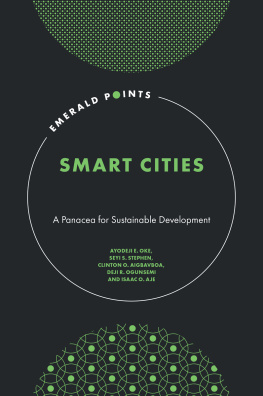Piotr Idczak - Financial Engineering in Sustainable Funding of Urban Development in the EU
Here you can read online Piotr Idczak - Financial Engineering in Sustainable Funding of Urban Development in the EU full text of the book (entire story) in english for free. Download pdf and epub, get meaning, cover and reviews about this ebook. year: 2022, publisher: De Gruyter, genre: Politics. Description of the work, (preface) as well as reviews are available. Best literature library LitArk.com created for fans of good reading and offers a wide selection of genres:
Romance novel
Science fiction
Adventure
Detective
Science
History
Home and family
Prose
Art
Politics
Computer
Non-fiction
Religion
Business
Children
Humor
Choose a favorite category and find really read worthwhile books. Enjoy immersion in the world of imagination, feel the emotions of the characters or learn something new for yourself, make an fascinating discovery.

- Book:Financial Engineering in Sustainable Funding of Urban Development in the EU
- Author:
- Publisher:De Gruyter
- Genre:
- Year:2022
- Rating:5 / 5
- Favourites:Add to favourites
- Your mark:
- 100
- 1
- 2
- 3
- 4
- 5
Financial Engineering in Sustainable Funding of Urban Development in the EU: summary, description and annotation
We offer to read an annotation, description, summary or preface (depends on what the author of the book "Financial Engineering in Sustainable Funding of Urban Development in the EU" wrote himself). If you haven't found the necessary information about the book — write in the comments, we will try to find it.
Piotr Idczak: author's other books
Who wrote Financial Engineering in Sustainable Funding of Urban Development in the EU? Find out the surname, the name of the author of the book and a list of all author's works by series.
Financial Engineering in Sustainable Funding of Urban Development in the EU — read online for free the complete book (whole text) full work
Below is the text of the book, divided by pages. System saving the place of the last page read, allows you to conveniently read the book "Financial Engineering in Sustainable Funding of Urban Development in the EU" online for free, without having to search again every time where you left off. Put a bookmark, and you can go to the page where you finished reading at any time.
Font size:
Interval:
Bookmark:

ISBN 9783110762174
e-ISBN (PDF) 9783110762198
e-ISBN (EPUB) 9783110762235
Bibliographic information published by the Deutsche Nationalbibliothek
The Deutsche Nationalbibliothek lists this publication in the Deutsche Nationalbibliografie; detailed bibliographic data are available on the Internet at http://dnb.dnb.de.
2022 Walter de Gruyter GmbH, Berlin/Boston
External economies of urbanisation
:The spatially hierarchical organisation of the urban system
:The formation process for deprived urban areas
:Different options for area-based regeneration at the local level
:The model of the integrated approach to urban regeneration applicable at the
European level
:The prism of urban sustainability
:The JESSICA institutional system in the years 20072013
:The institutional system of JESSICA in Poland in the years 20072013
:JESSICA regions and the location of JESSICA projects in Poland
:Operationalisation of the assessment of the JESSICA projects
:Mutual dependencies of the involved variables
:Effect display for the predictors of the project capacity to generate revenues
:Interaction effect of the company status on the project capacity to generate
revenues
:Interaction effect of the project capacity to generate revenues on positive market effects
:Effect display for the predictors of the project capacity to create social impacts
:Assessment of the JESSICA dimensions by projects implemented in Poland in 20072015 (results of the survey)
:Histogram of the composite indicator
:Composite indicator in Polish regions by type of project and type of beneficiary
:Dendrogram for the Genie linkage algorithm of the composite indicator
:Clusters by the composite indicator
:Clusters by the value of the JESSICA projects
:Distribution of clusters of projects in regions
:Distribution of clusters of projects according to type of beneficary
:Location of the JESSICA project in Pozna
:Sub-indicators in the territorial impact assessment of JESSICA projects
implemented in Pozna
:Indicators in the assessment of the territorial impact of JESSICA projects
implemented in Pozna
:SDE for the spatial spread of JESSICA projects in Poland
:Location of JESSICA projects in Mazowieckie in the context of MA
:Location of JESSICA projects in Pomorskie in the context of MA
:Location of JESSICA projects in lskie in the context of MA
:Location of JESSICA projects in Wielkopolskie in the context of MA
:Location of JESSICA projects in Zachodniopomorskie in the context of MA
:Distribution of JESSICA funding across Polish cities
:Mutual dependencies of the citys size and the value of the JESSICA loan
:Proposal for a new JESSICA institutional system
Forces affecting geographical concentration
:Dimensions and initiatives of urban regeneration
:JESSICA in the Polish regional operational programmes for the years 20072013
:Properties of an ellipse for the purpose of the overall interpretations
:Number of JESSICA projects implemented in 20072015 according to their capacity to generate revenues
:Identification of differences based on the Wilcoxon rank sum test
:Coefficients of logistic regression for JESSICA projects implemented in Poland
:Results of ANOVA for JESSICA projects implemented in Poland
:Characteristics of clusters of projects by JESSICA support areas
:SDE parameters of JESSICA projects in five regions
:Distribution of JESSICA projects and funding among Polish cities
Bank Gospodarstwa Krajowego (Polish development bank)
BOBank Ochrony rodowiska S.A. (Polish development bank focused on ecology)
BZWBKBank Zachodni WBK S.A. (Polish private bank)
CEBCouncil of Europe Development Bank
COCOFEuropean Commissions Coordinating Committee of the Funds
CPEU Cohesion Policy
CPTCentral Place Theory
DG RegioEuropean Commissions Directorate General for Regional and Urban Policy
EIBEuropean Investment Bank
EIFEuropean Investment Fund
ERDFEuropean Regional Development Fund
ESIFEuropean Structural and Investment Funds
EUEuropean Union
FEIsFinancial engineering instruments
FUAWUrban Functional Area of the City of Warsaw in the Mazowieckie region
HFHolding fund
IPSUDIntegrated plan for sustainable urban development
IURPIntegrated urban regeneration programme
JESSICAJoint European Support for Investments in City Areas
LUPLand use planning
MAsMetropolitan areas of the regional capital cities
MUSVMetropolis of the Upper Silesian Valley in the lskie region
MVAMultivariate analysis
OP(s)Operational Programme(s)
PIPPotential impact of a project
PIPolicy intensity
PMAPozna Metropolitan Area in the Wielkopolskie region
PPPsPublicprivate partnerships
ROP(s)Regional Operational Programme(s)
SDEStandard deviational ellipse
SMASzczecin Metropolitan Area in the Zachodniopomorskie region
TCMATri-City Metropolitan Area (Gdask-Gdynia-Sopot) in the Pomorskie region
TIATerritorial impact assessment
TIMTerritorial impacts indicator
UDFUrban development fund
USUrban sensibility
Piotr Idczak, Ida Musiakowska, Pozna University of Economics and Business, Department of European Studies. Address: Al. Niepodlegoci 10, 61-875 Pozna. E-mail: piotr.idczak@ue.poznan.pl; ida.musialkowska@ue.poznan.pl
To plan for the improvement of the urban scene |
whilst ignoring economic considerations would be to invite disaster. |
() |
Cities and urban agglomerations have often been described as engines of economic growth and development for regions and countries. On the one hand, they offer access to a number of jobs, cultural activities and personal development opportunities that make the city a nice place to live. On the other hand, they provide a labour force as well as a wealth of talent and expertise within the local workforce, and a sales market which undoubtedly make them great places to do business. The result of this is that they undergo changes over time, which is reflected in the continuous modifications of their visual appearance as well as in the relatively quick customisation of various urban functions to inhabitants needs ( found that in some places situated in inner-city areas local populations suffer from a concentration of inequalities: poor housing, unemployment, low-quality education, difficulties or even the inability to access some public services. Their findings also strongly suggest that the concentration of inequalities results in social and spatial polarisation. The unequal distribution of wealth in the urban space leads to a territorial division of residential areas into those inhabited by the richer or poorer groups of society. Thus, what clearly emerges are two separate and contradictive zones existing alongside one another, namely on the one hand, areas of stability and affluence and on the other, deprived areas experiencing a poor quality of life. A typical pattern of urban deprivation demonstrates that the most deprived areas are generally located in the older districts of the cities i.e. zones with declining industry, riddled with poor housing, blighted by unemployment and socially excluded from more prosperous districts.
Font size:
Interval:
Bookmark:
Similar books «Financial Engineering in Sustainable Funding of Urban Development in the EU»
Look at similar books to Financial Engineering in Sustainable Funding of Urban Development in the EU. We have selected literature similar in name and meaning in the hope of providing readers with more options to find new, interesting, not yet read works.
Discussion, reviews of the book Financial Engineering in Sustainable Funding of Urban Development in the EU and just readers' own opinions. Leave your comments, write what you think about the work, its meaning or the main characters. Specify what exactly you liked and what you didn't like, and why you think so.







